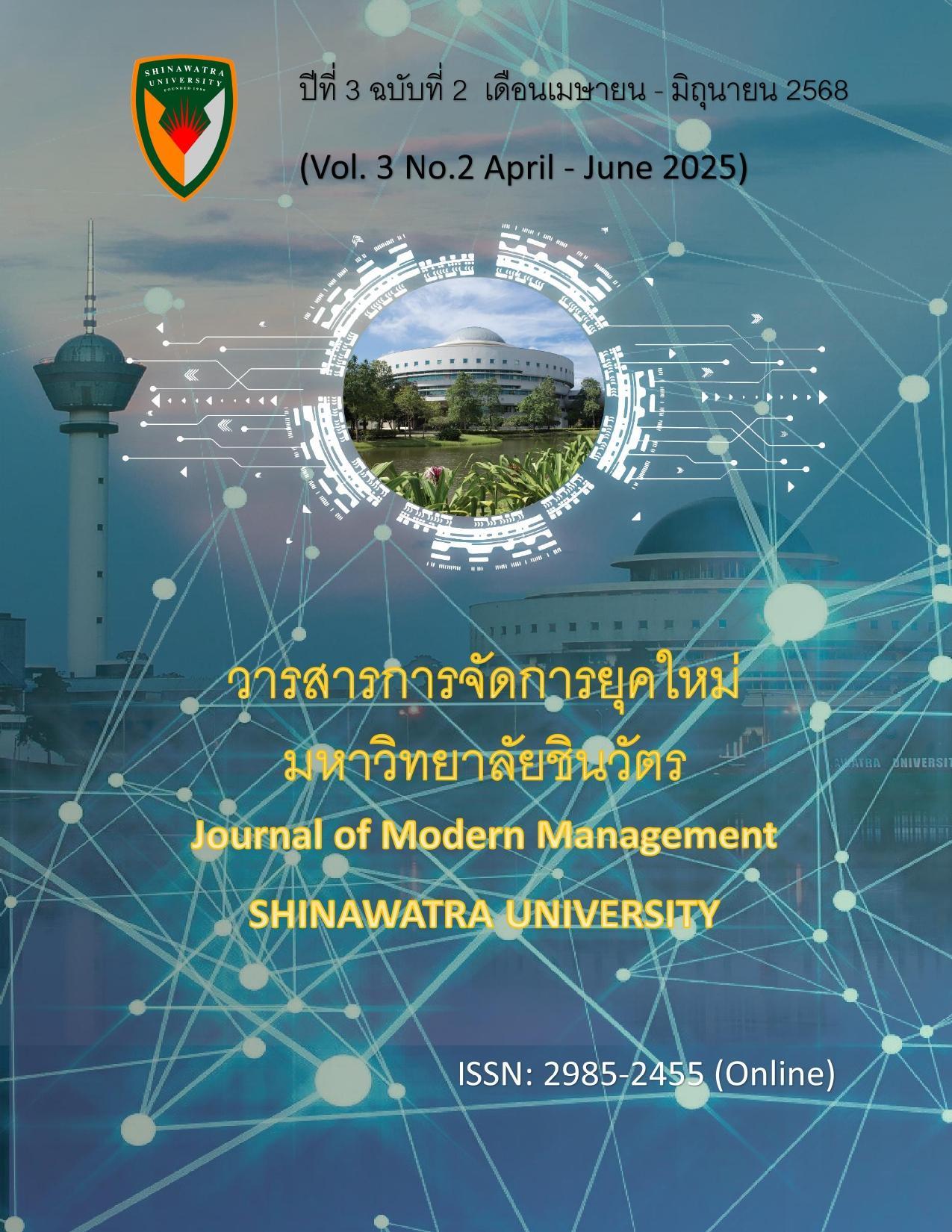Utilization of Human Capital, Ageism and Direction for Driving Elderly Work
Keywords:
Human Capital, Ageism, Older PersonAbstract
This article presents the structural and human capital situation of the elderly, ageism in theoretical perspective and the situation of aging societies in Thailand and Japan, and suggestions on directions for driving work on the elderly, found that 1) Bringing the elderly back into the labor system and becoming elderly workers will be an important human capital to drive the country forward. It's called the third demographic dividend which will use the working ability of healthy elderly people enthusiastic and effective. 2) Guidelines for reducing intergenerational conflict, consist of 3 steps: (1) Creating understanding (2) Openness to different perspectives and opinions (3) Integrated communications. 3) Suggestions for the direction of driving work on the elderly, consisting of 3 approaches: (1) Promoting understanding of the aging society for all generations of the population (2) Strengthening the employment potential of the elderly to drive society (3) Creating cooperation and allocating welfare for the well-being of the elderly.
References
กรมกิจการผู้สูงอายุ. (2566). สถานการณ์์ผู้สูงอายุุไทย พ.ศ. 2565. กรุงเทพฯ : บริษัท อมรินทร์ คอร์เปอเรชั่นส์ จำกัด (มหาชน).
เฉลิมพล จงวิทูกิจ. (2567). การศึกษาความสัมพันธ์ มิติสุขภาพ การมีส่วนร่วมทางสังคม และพฤติกรรม
การใช้ชีวิตประจำวัน ต่อความสุขของผู้สูงอายุไทย. (วิทยานิพนธ์ปริญญาดุษฎีบัณฑิตไม่ได้ตีพิมพ์). จุฬาลงกรณ์มหาวิทยาลัย.
ณัฏฐพัชร สโรบล วรรณลักษณ์ เมียนเกิด และธัญญาภรณ์ จันทรเวช. (2566). ถอดรหัส ไขกุญแจ ศูนย์
ชุมชนสำหรับคนทุกวัย (STRONG Community Cenet) ภายใต้แนวคิด "สังคมสูงวัย หัวใจสตรอง". ปทุมธานี : เทศบาลเมืองบึงยี่โถ กรมส่งเสริมการปกครองส่วนท้องถิ่น กระทรวงมหาดไทย.
ไทยพีบีเอส. (2566). ว่าใด…วัยเฮา เมื่อเราจะเฒ่ากัน. สืบค้นเมื่อวันที่ 22 ธันวาคม 2567.
จาก https://thecitizen.plus/node/88126
ปิยะวัฒน เจริญศักดิ์. (2567). ความสุขของแรงงานสูงอายุไทย. (วิทยานิพนธ์ปริญญาดุษฎีบัณฑิตไม่ได้ตีพิมพ์). จุฬาลงกรณ์มหาวิทยาลัย.
มนุษย์ต่างวัย. (2566). อุปกรณ์จำลองการเป็นผู้สูงอายุ เชื่อมใจรุ่นใหม่และรุ่นใหญ่ให้เข้าใจกัน. สืบค้นเมื่อวันที่ 21 ธันวาคม 2567. จาก https://www.manoottangwai.com/waineewaidee-aging-society/
มหาวิทยาลัยธรรมศาสตร์. (2561). รายงานฉบับสมบูรณ์โครงการส่งเสริมการมีร้ายได้และการมีงานทำ
ของผู้สูงอายุตามนโยบายประชารัฐเพื่อสังคม (E6). สืบค้นเมื่อวันที่ 21 ธันวาคม 2567. จาก
https://www.dop.go.th/download/knowledge/th1550211728-152_0.pdf
วรากรณ์ สามโกเศศ. (2564). ลดขัดแย้งระหว่างรุ่น. สืบค้นเมื่อวันที่ 14 ธันวาคม 2567.
จาก https://www.bangkokbiznews.com/blogs/columnist/963886
ศศิพัฒน์ ยอดเพชร. (2560). บริการท้องถิ่นเพื่อการเปลี่ยนแปลงที่ดีสำหรับผู้สูงอายุ. กรุงเทพฯ : สถาบันพระปกเกล้า.
ศุภเจตน์ จันทร์สาส์น. (2555). พฤฒิพลังของผู้สูงอายุไทย การปันผลทางประชากร และโอกาสทาง
เศรษฐกิจของประเทศไทยในสังคมสูงวัย. วารสารศรีนครินทรวิโรฒวิจัยและพัฒนา (สาขา
มนุษยศาสตร์และสังคมศาสตร์), 4(7), 201-214.
สำนักงานสภาผู้แทนราษฎร์. (2561). สังคมผู้สูงอายุกับการขับเคลื่อนเศรษฐกิจไทย. สืบค้นเมื่อวันที่ 21
ธันวาคม 2567. จาก https://www.dop.go.th/download/knowledge/th1617171499-
_0.pdf
สถาบันวิจัยเพื่อการพัฒนาประเทศไทย. (2566). การขยายอายุเกษียณในญี่ปุ่น. สืบค้นเมื่อวันที่ 15
ธันวาคม 2567. จาก https://tdri.or.th/2023/01/japan-aging-workforce/
สุทธิชัย จิตะพันธุ์กุล. (2544). หลักสําคัญของเวชศาสตร์ผู้สูงอายุ. กรุงเทพฯ : โรงพิมพ์จุฬาลงกรณ์มหาวิทยาลัย.
หนึ่งฝัน พุทธธรรมวงศ์ ฐาศุกร์ จันประเสริฐ และกาญจนา ภัทราวิวัฒน์. (2564). วยาคติต่อบิดามารดา สูงอายุ: กรณีศึกษาสมาชิกวัยหนุ่มสาวในครอบครัวไทย. วารสารพฤติกรรมศาสตร์เพื่อการพัฒนา, 13(1), 1-24.
Achenbaum, W. A. (2015). A History of Ageism Since 1969. Journal of the American
Society on Aging, 39(3), 10-16.
Chongwitookit, C. (2016). The use of digital marketing communication in Jewelry business and it roles on building brand equity. (Master of Science International Luxury and Brand Management). Rennes School of Business.
Chaudhary, S. & Srivastava, S. K. (2018). Happiness and Aging: A Comparative Study. Psychology and Education: An Interdisciplinary Journal, 55(2), 108-113.
Khoury, M. (n.d.). Mind The Generational Gap: Japan’s Division Between Young and
Old. Retrieved December 21, 2024, from https://sabukaru.online/articles/mind-the-generational-gap-japans-division-between-young-and-old
Matsukura, R., Shimizutani, S., Mitsuyama, N., Lee, S-H. & Ogawa, N. (2018). Untapped workcapacity among old persons and their potential contributions to the “silver dividend” in Japan. Journal of the Economics of Ageing, 12, 236-249.
Noguchi, T., Suzuki, S., Nishiyama, T., Otani, T., Nakagawa-Senda, H., Watanabe, M.,
Hosono, A., Tamai, Y. and Yamada, T. (2022). Associations between Work-Related Factors and Happiness among Working Older Adults: A Cross-Sectional Study. Annals of Geriatric Medicine and Research, 26(3), 256-263.
Oswald, J. A., Protoand, E. & Sgroi, D. (2014). Happiness and Productivity. Journal of Labor Economics, 33(4), 789-822.
Ogawa, N., Mansor, N., Lee, S-H, Abrigo, Michael R. M. & ArisAsian, T. (2021). Population Aging and the Three Demographic Dividends in Asia. Development Review, 38(1), 32–67.
Sarobol, N. (2022). Factors Affecting Effectiveness of The Active Aging Program for Older Persons in Thailand. Social Science Asia, 8(4), 16-35.
United Nations Population Fund. (2022). Technical Note on Thailand's Third Demographic Dividend Potential. Bangkok: Chulalongkorn University.
World Health Organization. (2002). Active Ageing A Policy Framework. Retrieved December 19, 2024, from https://extranet.who.int/agefriendlyworld/wp-content/uploads/2014/06/WHO-Active-Ageing-Framework.pdf
World Health Organization. (n.d.). Ageism. Retrieved December 21, 2024, from https://www.who.int/health-topics/ageism#tab=tab_2
Downloads
Published
Issue
Section
License
Copyright (c) 2025 Journal of Modern Management SHINAWATRA UNIVERSITY

This work is licensed under a Creative Commons Attribution-NonCommercial-NoDerivatives 4.0 International License.





